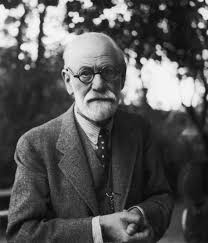 II. The Dream Navel “There is at least one spot in every dream at which it is unplumbable—a navel, as it were, that is its point of contact with the unknown.” (Freud, The Interpretation of Dreams) In this footnote to his influential “The Interpretation of Dreams,” Freud points us toward a spot in every dream, it’s navel, where it opens out into a territory that is unknown and perhaps unknowable. For Freud, dreams were emissaries from the unconscious, and important descriptors of who we are as individual psyches. Freud saw dreams as representations of our deepest wishes and desires, and as crucial to understanding the true causes of neurotic suffering. He called dreams the "royal road to the unconscious," and advocated sustained attention to dreams as essential to healing. His writings on dreams have been hugely influential to many contemporary psychotherapeutic approaches, and also to academics and intellectuals in many disciplines. However Freud, a man of his time and place, wasn’t able to elaborate much on the dream navel, and to explore more about portal into the vastness. He pointed toward the depth of this mind, but he said that he himself had never had an experience of what he called “an oceanic experience” and left it to future generations to enter his footnote, to find the dream navel, the place of its point of contact with the unknown. Freud noticed that in dreams the ordinary rules of logic don’t apply. It would not be unusual for someone to say, in my dream I was my age now, but I was also an old woman. When we enter the world of dreams, things can be fantastical, magical, terrifying. Time and space and identity are pliable. Freud taught that dreams are emissaries from the unconscious and so partake of its qualities. He identified five characteristics of the unconscious: timelessness, displacement, condensation, replacement of internal by external reality, and absence of mutual contradiction (Freud, 1900, 1915). It’s not hard to see that these are also qualities that characterize dreams, as well as art, myth, and eros. In the koan of the well that has not been dug, we come up to a place of no contradiction, and a negation of categories of time and space. We have an invitation in the koan to sit with these mysteries, and to see where they take us. Freud’s dream navel is a border concept. It is a frontier of exchange between what he calls the unknown and what rises up as a dream experience. The dream always bears the stamp of the unknown, in the form of the navel. It’s notable that Freud’s metaphor for this link is the navel, the marker of the point of union with your creator, Mother. The dream navel evokes associations to our connection to origins, to our actual mother, and to the Mother we relate to in life and in practice. It also evokes an image of the severance from this source, and perhaps a phantasy of a portal back into that point of original union. Many teachings have described the vastness as like an ocean, out of which particular waves arise, and then fall away. Each one of us, each poignant or painful moment, is a wave that arises and then falls back into the vast ocean. Koun Yamada Roshi taught that reality is like an equation, where the denomenator is always zero, the infinite vastness, and the numerator is all phenomena, each thing in its particularity. In koans, and in dreams, we explore the place where ocean meets wave, the place Freud called the dream navel. This is a liminal zone, a place where dream and mystery come together. I imagine it as a kind of umbilical cord that leads out into the vastness. Perhaps we can climb into the dream navel, and check out the view from there. In this liminal space, we can see the dream and the mystery at the same time. One eye always in the play of the dream, and another on the navel, the portal into the unknown, the inconceivable. When we stay in this dream navel, life gets richer, deeper, stranger. The psychoanalyst Wilfred Bion used the term “bi-nocular vision” for the kind of perception that allows multiple perspectives at once. He noted that seeing with bi-nocular vision both the conscious and the unconscious mind leads to an experience of depth that is profoundly meaningful to many people. Sitting in the dream navel is a bi-nocular experience. In the dream navel, we find yet another dimension beyond conscious and unconscious mind, the unborn mind that deeply constitutes them. When we feel simultaneously the transience and the beauty and the heartbreak of the dream, and watch it pour ever into the vastness, we are both deeply alive and deeply at rest. My teacher, Joan Sutherland Roshi, says that the experience of awakening can be felt as a quality of shimmer, a dance between the particular and the vastness. She quotes the Lankavatara Sutra, which says, “things are not as they seem, nor are they otherwise.” When we attune our inner gaze more and more to this quality of shimmer, we find that we can trust the dream of life, and even join in and dream it further. Sitting in the dream navel, we experience the shimmer between each thing that rises up—teacup, Iphone, heartbreak—and the vast unknown that it is always arising from and falling back into.
0 Comments
Leave a Reply. |
Details
AuthorMegan Rundel is the resident teacher at the Crimson Gate Meditation Community in Oakland, CA.. Archives
April 2020
Categories
|

 RSS Feed
RSS Feed